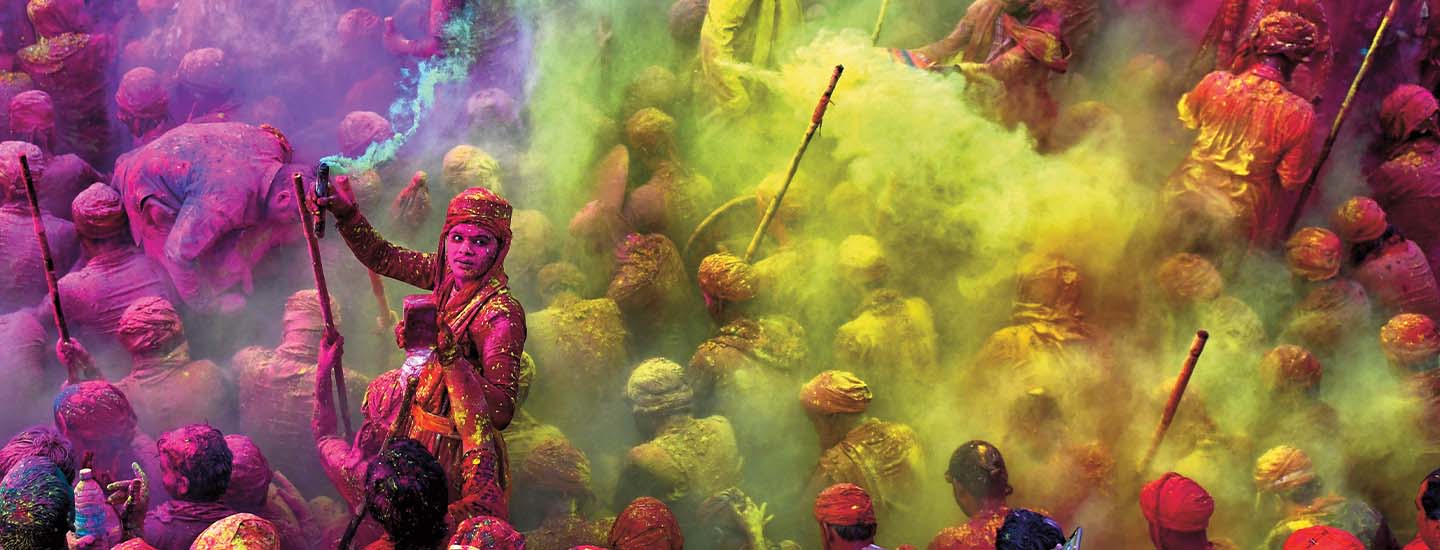Jim McMahon, Mapman®
A rainbow of colors will burst onto the streets of India on March 18. Millions of people who follow the Hindu religion in the South Asian nation will toss brightly colored powder to celebrate a holiday known as Holi. Also called the Festival of Colors, Holi offers a chance to chase away the gray days of winter and welcome the arrival of spring.
An estimated 1.1 billion people around the world practice Hinduism, including about 80 percent of India’s population.
Joyful crowds of the religion’s followers gather in India and around the globe for Holi every year, many wearing white clothing. The streets quickly become a kaleidoscope of color, as people revel by throwing vibrantly hued powder and flower petals into the air and spraying each other with water. Each of the dyed powders represents the rebirth of flowers and fruits.
The festival celebrates the triumph of good over evil and brightness over darkness. For many people, Holi is also a day of togetherness and goodwill. Those who have had disagreements use the holiday as a chance to forgive and start fresh. Family members and friends gather together to dance, sing, and eat sweets—and to look on the bright side!

